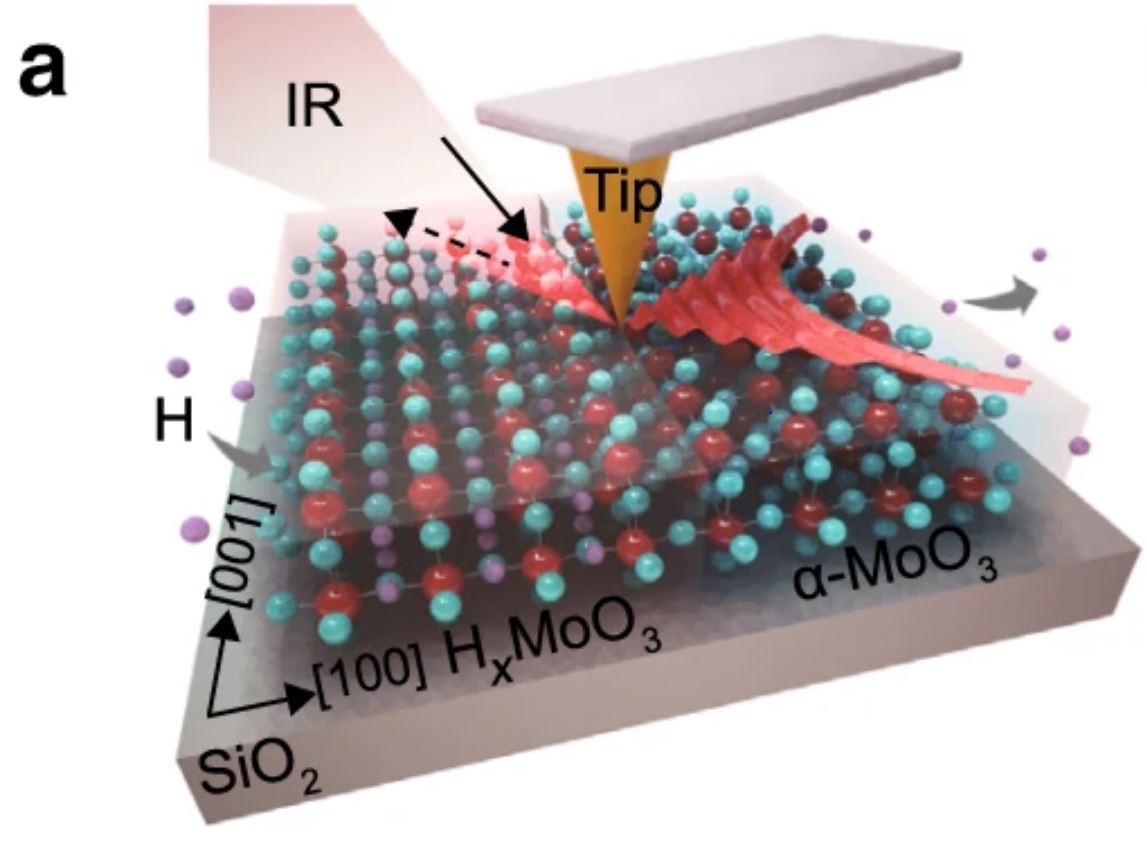In the article “Influence of orientation and ferroelectric domains on the photochemical reactivity of La2Ti2O7” Mingyi Zhang, Paul A. Salvador and Gregory S. Rohrer describe how they measured the effects of crystal orientation and ferroelectric domain structure on the photochemical reactivity of La2Ti2O7. *
The reactivity is greatest on (001) surfaces (this is the orientation of the layers in this (110)p layered perovskite structure) while surfaces perpendicular to this orientation have the least reactivity. Complex domain structures were observed within the grains, but they appeared to have no effect on the photocathodic reduction of silver, in contrast to previous observations on other ferroelectrics. La2Ti2O7 is an example of a ferroelectric oxide in which the crystal orientation has a greater influence on the photochemical reactivity than polarization from the internal domain structure. *
NanoWorld™ conductive Platinum Iridium coated Arrow-EFM AFM probes were used for the Piezo-force microscopy (PFM) that was used to determine the ferroelectric domain structure on the surface. *
The ferroelectric domains on the surface were found to have irregular shapes and there was no correlation between the pattern of silver reduction and the domain shape. The results indicate that the ferroelectric polarization of La2Ti2O7 does not alter the reactivity enough to overcome the influence of the anisotropic crystal structure. *

A La2Ti2O7 grain imaged with different modalities. (a) a PFM out-of-plane amplitude image. (b) a PFM out-of-plane phase image. A meandering black line in (a), marked by the arrow, corresponds to a change from light to dark contrast in the phase image. The dark (light) contrast corresponds to regions with -180° (0°) phase shift. Please have a look at the full article cited below for the full figure
*Mingyi Zhang, Paul A. Salvador and Gregory S.Rohrer
Influence of orientation and ferroelectric domains on the photochemical reactivity of La2Ti2O7
Journal of the European Ceramic Society (2020)
DOI: https://doi.org/10.1016/j.jeurceramsoc.2020.09.020
Please follow this external link to read the full article https://www.sciencedirect.com/science/article/pii/S0955221920307445
Open Access : The article “Influence of orientation and ferroelectric domains on the photochemical reactivity of La2Ti2O7” by Mingyi Zhang, Paul A. Salvador, Gregory S. Rohrer is licensed under a Creative Commons Attribution 4.0 International License, which permits use, sharing, adaptation, distribution and reproduction in any medium or format, as long as you give appropriate credit to the original author(s) and the source, provide a link to the Creative Commons license, and indicate if changes were made. The images or other third party material in this article are included in the article’s Creative Commons license, unless indicated otherwise in a credit line to the material. If material is not included in the article’s Creative Commons license and your intended use is not permitted by statutory regulation or exceeds the permitted use, you will need to obtain permission directly from the copyright holder. To view a copy of this license, visit https://creativecommons.org/licenses/by/4.0/.

![Fig. 1 from “Determination of polarization states in (K,Na)NbO3lead-free piezoelectric crystal” by Mao-Hua Zhang et al: PFM imaging and a schematic of tip movement during SS-PFM mapping. (a) Piezoresponse amplitude and (b) phase contrast images of the KNN single crystals. (c) In SS-PFM, local hysteresis loops are collected using a waveform at each pointon 25 × 25 mesh. The domain wall shown in Fig. 1(b) orients along [001]c.](https://dhipgo7nn2tea.cloudfront.net/wp-content/uploads/2020/07/25112255/figure-1-from-Mao-Hua-Zhang-et-al-2020-Determination-of-polarization-states-in-KNaNbO3lead-free-piezoelectric-crystal-NanoWorld-Pointprobe-EFM-AFM-probe-1-1-1024x536.jpg)
